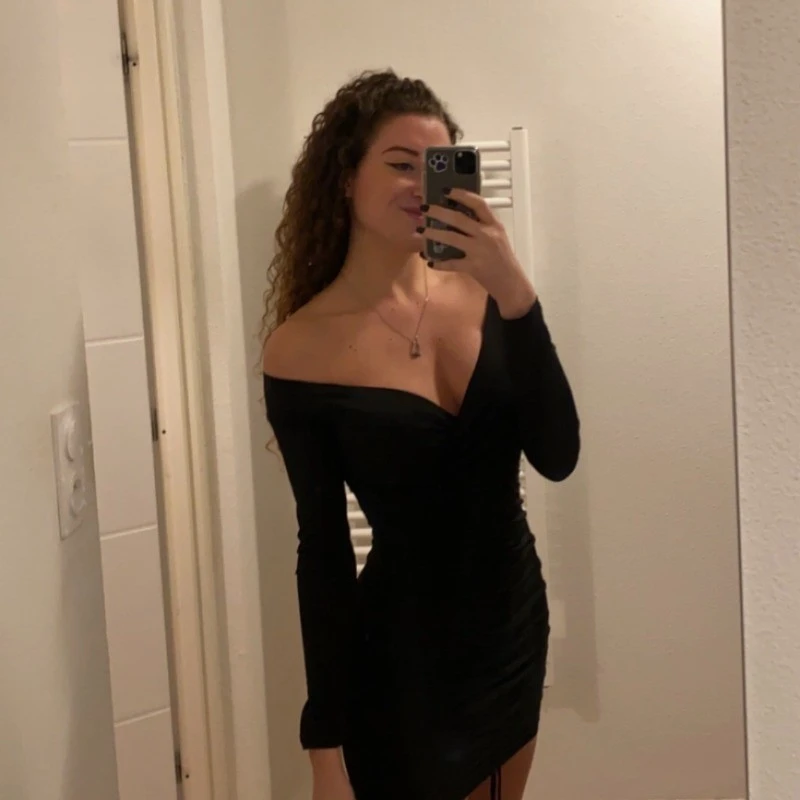How many subscribers to get paid on YouTube is one of the first questions new creators ask. It makes sense, you want to know when your passion can start turning into income.
The answer isn’t as simple as hitting a single number, though. YouTube has two main subscriber milestones that unlock different ways to earn, and both require more than just subs alone.
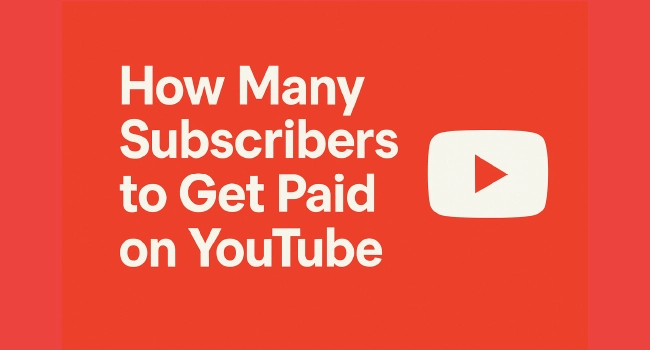
What the YouTube Partner Program Is
The YouTube Partner Program (YPP) is your entry point to making money on the platform. When you join, YouTube gives you access to all of its monetization tools in one place, and your earnings are sent through Google AdSense.
Here's what being in YPP means in practice:
-
You can switch on ads for your long-form videos and Shorts.
-
You get access to fan-funding tools like Memberships, Super Chat, and Super Thanks.
-
Your content becomes eligible for YouTube Premium revenue.
-
You can add Shopping features to sell your own products or promote others.
Joining YPP also gives you access to YouTube's Creator Support team, policy guidance, and monetization dashboards inside YouTube Studio. These help you track performance, understand what's making money, and see where your channel could improve.
In other words, YPP is the complete system that manages how you earn, track, and receive payments as a creator.
How Many Subscribers to Get Paid on YouTube (And What Each Milestone Unlocks)
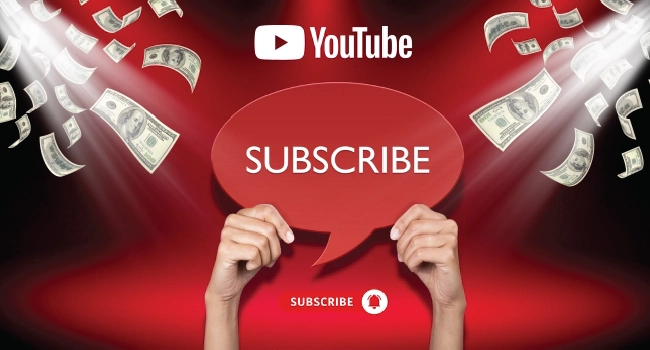
So, how many subscribers to get paid on YouTube? The short answer is that there are two different milestones, and each unlocks different opportunities.
At 500 subscribers, you can begin experimenting with fan-funding tools. For example, you might add Channel Memberships to give your biggest supporters perks like custom emojis or early access to videos.
Or you could enable Super Chat during livestreams and let viewers pay to highlight their messages. This is often the first "aha!" moment for small creators, because you can see real money coming in before your channel hits four digits.
At 1,000 subscribers, your channel qualifies for ad revenue. That's when long-form video ads, Shorts ads, and YouTube Premium views start paying out.
But remember, it's not just about subs. You'll also need either 4,000 valid watch hours in the past year or 10 million Shorts views in the last 90 days. Hitting this level usually signals that you've built a consistent audience, which means more stable earnings.
Here's a quick side-by-side for clarity:
| Requirement | 500 Subs (Fan-Funding Access) | 1,000 Subs (Full Monetization) |
|---|---|---|
| Subscribers | 500 | 1,000 |
| Watch Hours | 3,000 in 12 months | 4,000 in 12 months |
| Shorts Views | 3M in 90 days | 10M in 90 days |
| Features Unlocked | Memberships, Supers, Shopping | Ads, Premium revenue, Fan-funding, Shopping |
Many creators also ask how do you get subscribers on YouTube fast so they can reach these levels sooner. The truth is, building an audience takes time, but you don't have to wait forever to see growth.
If you want a quicker push, you can use one of our services and buy YouTube subscribers from real accounts with fast delivery and visible results. It's one of the easiest ways to look more established, attract organic viewers, and unlock monetization faster while you focus on making great content.
Revenue Streams You Can Unlock
Once you're in the YouTube Partner Program, different revenue streams become available depending on your channel size and activity. These streams give you more flexibility in how you earn.
Here are the main ones:
-
Ad revenue – Display ads, pre-rolls, mid-rolls, and Shorts ads.
-
Fan-funding – Channel Memberships, Super Chat, Super Stickers, and Super Thanks let viewers support you directly.
-
YouTube Premium revenue – A share of subscription fees from Premium members who watch your videos.
-
Shopping features – Add your own products or affiliate items to your channel.
Each stream has its own potential. For example, a channel with a tight-knit community might make more from fan-funding than ads. On the other hand, creators who focus on long-form content often earn most through ad revenue.
It's why the answer to how much do YouTubers make is never the same, it depends on which features you unlock and how your audience engages with them.
When and How You Actually Get Paid
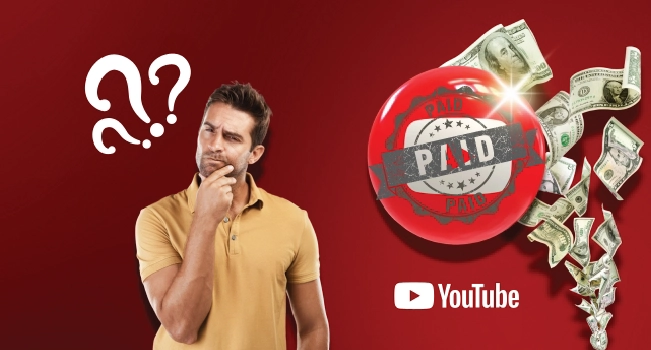
Joining the YouTube Partner Program unlocks monetization, but payments only start once you set up the process correctly. Here's what happens step by step:
-
1. Link to AdSense – You connect your YouTube channel to a Google AdSense account. This is where all earnings are collected.
-
2. Verify your details – You'll need to submit ID, fill out tax information, and confirm your home address with a PIN code mailed to you.
-
3. Reach the payout threshold – YouTube pays out once your balance hits at least $100. Until then, your earnings roll over each month.
-
4. Monthly payment cycle – Finalized earnings are added to AdSense around the 10th of each month. Payments are then sent between the 21st and 26th.
For example, if your channel earns $120 in March, that amount becomes available in April's payout cycle and is deposited into your account toward the end of April.
Therefore, the speed of your first payment depends not only on your subscriber milestone but also on how quickly you reach the $100 minimum.
YouTube Shorts Monetization Explained
YouTube Shorts has its own monetization system that works differently from long-form videos. Instead of placing ads directly on each Short, YouTube collects ad revenue from the feed between Shorts and places it into a shared pool.
-
1. Ads run between Shorts videos in the feed.
-
2. That money goes into a central creator pool.
-
3. A portion is used to cover music licensing.
-
4. The rest is split among creators based on their share of Shorts views.
-
5. You receive 45% of your allocated share.
To qualify for Shorts monetization, you need 10 million valid Shorts views in 90 days along with 1,000 subscribers. This ensures you're consistently creating content that people actually watch and engage with.
For example, if you account for 2% of all Shorts views in the pool during a month, you'll receive 2% of the net revenue before your 45% share is calculated. This setup rewards creators who can generate large volumes of views quickly.
Common Myths and Misunderstandings
When it comes to monetization, there's a lot of confusion. Let's clear up the most common myths:
-
"You get paid at 500 subscribers." – At 500 subs you can unlock fan-funding, but ad revenue only starts at 1,000 subs.
-
"Shorts watch hours count toward the 4,000-hour requirement." – They don't. Instead, Shorts use the separate 10 million views requirement.
-
"You need 30,000 subscribers for Memberships." – This used to be true, but not anymore. Today you can enable Memberships at 500 subs if you meet the other conditions.
-
"YouTube pays you per subscriber." – Subscribers only unlock features. Payments are based on views, engagement, and revenue share.
These myths stick around because requirements have changed over time. Understanding the real rules will save you frustration and help you focus on what actually matters: consistent content and audience engagement.
Factors That Influence How Much You Earn
Reaching the subscriber milestones is just the beginning. The amount you actually take home depends on several factors:
-
RPM and CPM rates – These vary by niche, geography, and advertiser demand. A finance channel often earns more per view than a comedy channel.
-
Audience location – Viewers in countries with high ad spending bring in more revenue.
-
Video length and format – Longer videos can host mid-roll ads, while Shorts rely on the shared revenue pool.
-
Engagement – Likes, comments, and watch time all encourage YouTube to show your videos to more people.
Beyond YouTube's built-in systems, creators often increase earnings through sponsorships for YouTubers. These deals can pay more than ads once you build an engaged audience. For example, a tech channel with only 20,000 subscribers might land brand sponsorships worth thousands if the audience is loyal and targeted.
Focusing on both platform revenue and outside opportunities creates a stronger, more reliable income stream.
Key Policy Updates Creators Should Know
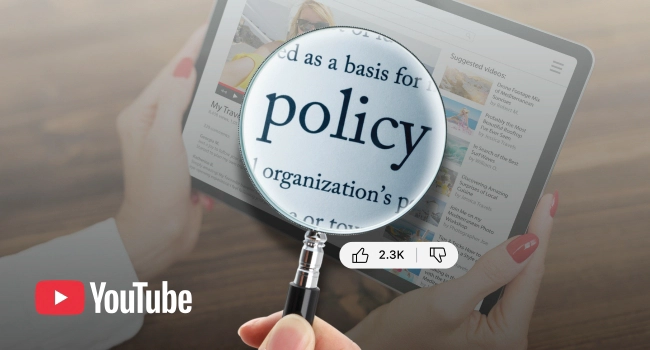
YouTube's monetization rules don't stay still. To keep your channel eligible, it's important to know about the latest updates that affect how you earn.
-
Automatic suitability checks – YouTube now runs extra automated reviews (sometimes manual too) to decide if a video is ad-friendly. This can take up to 24 hours, so plan uploads ahead of time.
-
Mid-roll ad placement changes – YouTube recently adjusted how mid-roll ads appear. Instead of jarring interruptions, ads are placed at natural pauses, which can change the number of ads your viewers see.
-
Content policy refresh – What used to be called "repetitious content" is now labeled "inauthentic content." The aim is to cut down on mass-produced or spam-style uploads, but the eligibility rules themselves haven't changed.
You can always check the official YouTube Help Center for the most accurate and updated monetization policies. Staying on top of these changes helps you avoid surprises and keeps your revenue steady.
First Payment Checklist (Practical Guide)
Unlocking monetization is exciting, but your first payout only comes after a few extra steps. Here's a simple checklist to follow:
-
1. Join the YouTube Partner Program – Make sure you've accepted the monetization modules inside YouTube Studio.
-
2. Link to AdSense – Connect your channel to a Google AdSense account so YouTube knows where to send your earnings.
-
3. Verify your details – Submit ID, fill in tax information, and confirm your address with a mailed PIN code.
-
4. Reach $100 balance – Payments are only released once your earnings hit the minimum payout threshold.
-
5. Track your cycle – Finalized earnings appear in AdSense around the 10th of the month, and payouts are sent between the 21st–26th.
-
6. Choose a payment method – Add your bank details or preferred payout option in AdSense to avoid delays.
Following this process makes sure your first payment arrives smoothly. Missing even one step, like address verification can pause your earnings, so it's worth double-checking before your balance grows.
Conclusion
Knowing how many subscribers to get paid on YouTube helps you set realistic goals for your channel. At 500 subscribers, you can unlock fan-funding and Shopping features, giving you an early taste of revenue.
At 1,000 subscribers, you qualify for ad revenue and Premium payouts, which can grow alongside your audience.
The real key is consistency. Every upload gets you closer to those milestones and builds trust with your viewers.
FAQs | Frequently Asked Questions |
How long does it take to get paid after joining YPP?
Once approved, your earnings show up in AdSense around the 10th of each month. Payments are sent between the 21st–26th, provided you’ve reached the $100 threshold and verified your account details.
Do Shorts views count toward the 4,000 watch hours?
No. Shorts have their own requirement: 10 million valid views in 90 days, along with 1,000 subscribers.
How much does YouTube pay per view?
There isn’t a fixed rate. Earnings depend on CPM and RPM, which vary by niche, country, and ad demand. Some creators average $1–$2 per 1,000 views, while others see much higher rates.
What’s the difference between ads and fan-funding?
Ads pay you based on watch time and engagement, while fan-funding comes directly from your audience through Memberships, Super Chat, and Super Thanks.
Can YouTube demonetize my channel after I join?
Yes, if you violate policies. Staying within YouTube’s monetization rules and creating original, authentic content is essential to keeping your revenue active.
